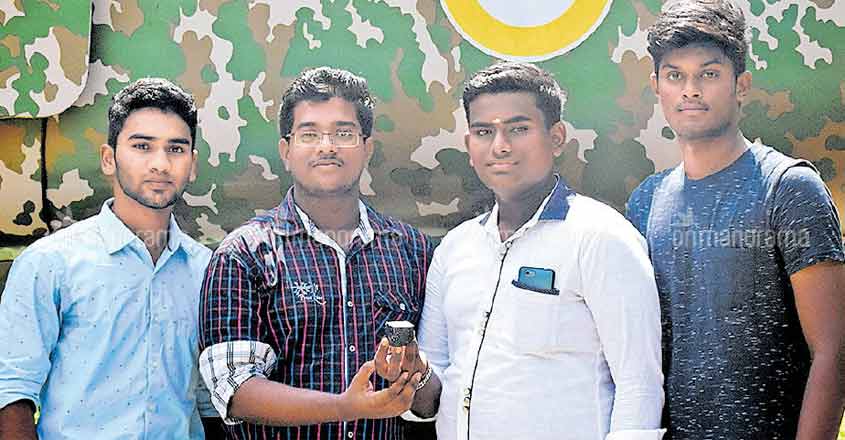NASA to launch satellite of students from Kerala, TN

Mail This Article
K J Harikrishnan dreamed of the universe and the mysteries it held since a young age. A bright student, he still found plenty of time to gaze at the heavens. Even after growing up, he refused to erase the image of a rocket that he had drawn in his study while very young.
When his good show in exams took Harikrishnan to the Aerospace Engineering course in Hindustan Institute of Technology and Science, Chennai, the youth’s astronomy dreams began to take real shape.
Finally, after a year-long effort, Harikrishnan has realised his first dream – he built ‘Jaihind I’, one of the world’s smallest and cheapest satellites, along with classmates. Harikrishnan and team were guided by G Dinesh Kumar, a faculty member of the Aerospace Department at the college, who belongs to Kerala.
Jaihind I
The satellite was built at Harikrishnan’s house in Red Hills and a special lab in college. All the parts were sourced from the local market. The team spent only Rs 15,000 to build the satellite, which weighs 33.39 gm.
Though tiny, Jaihind I is big on utility. It will record details of changes in atmospheric conditions as well as 20 factors related to the weather. It will also study the passage of Helium balloons and how nylon polymer acts in space. The exterior of the satellite is built with nylon polymer using 3D printing technology. The information collected from space will be recorded in the memory card of the satellite.

Jaihind I has gained an entry in the international contest named ‘Cubes in space’ which is being organized by NASA and idoodlelearning. Harikrishnan’s satellite is among the 100 projects selected for the competition from around the world. Jaihind I will be placed in space under the aegis of NASA.
Jaihind I’s creation
Harikrishnan said that his classmates G Sudhi, P Amarnath and T Giri Prasad gave wholehearted support to the project. These youngsters heard about this contest barely a year ago. They had initially planned to build a rocket, but realized that it was not easy to obtain the parts. Moreover, a big amount was needed for the project. They then decided to design and make a satellite. A long period of research followed. With the help of Dinesh Kumar, the students obtained science books and journals. They also studied previous satellite programmes. The work on the satellite was taken up subsequently.
“World over, studies are being conducted to examine whether life is possible on Mars and other planets. The outer shell of Jaihind I is made with nylon polymer to check how the material would behave in space and what changes would occur to it there,” said Dinesh.
Harikrishnan and his colleagues are keen to know how well the satellite would operate in space. Jaihind I will be launched in August this year.
Space prodigies
According to Dinesh Kumar, the youngsters, who hail from different backgrounds, show good promise and wouls play a major role in the nation’s space programmes in future.
Harikrishnan is the son of K S Jayadevan and Bindu at Shoranur in Palakkad.

